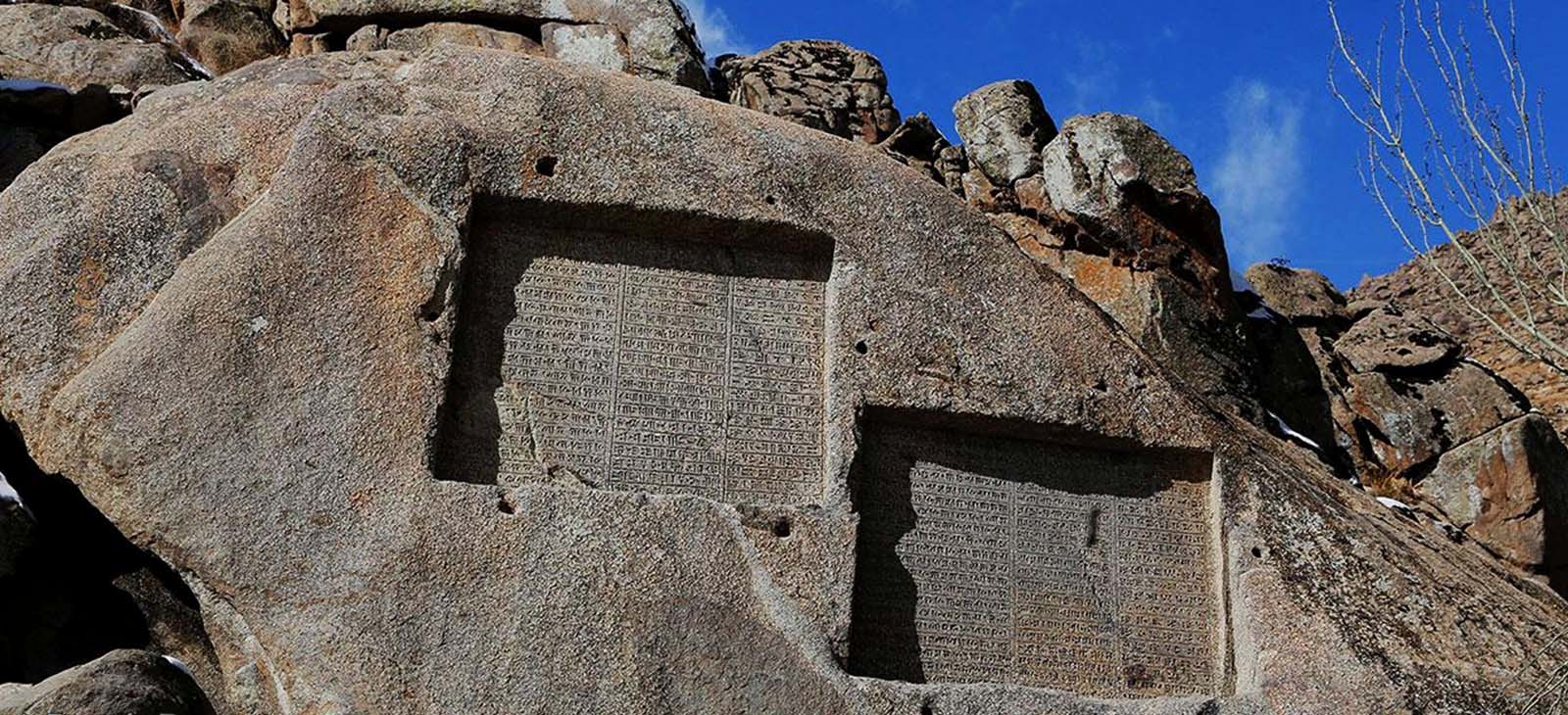One of the most ancient parts of Iran with a very old civilization that dates back to the time of the Medes (700 BC)
Hamadan is believed to be among the oldest Iranian cities and one of the oldest in the world. It is possible that it was occupied by the Assyrians in 1100 BCE; the Ancient Greek historian, Herodotus, states that it was the capital of the Medes, around 700 BCE. Its fortunes rose and fell in the successive centuries, becoming the summer retreat of King Cyrus in the 6th century BC, but falling foul of the marauding troops of the Mongols in 1220 and Timur in 1386. Hamadan has a green mountainous area in the foothills of the 3,574-meter Alvand Mountain, in the midwest part of Iran. The city is 1,850 meters above sea level. The special nature of this old city and its historic sites attract tourists during the summer to this city. The main symbols of this city are the Ganj Nameh inscription, the Avicenna monument and the Baba Taher monument.
Ganj Nameh an ancient inscription which has been carved in granite is composed of two sections. The cuneiform rock carvings of Ganjnameh date from the 5th Century BC and contain messages of thanks from the Achaemenid king Xerxes to the Zoroastrian god Ahuramazda and describe the lineage and deeds of the mentioned kings. Both sections were carved in three ancient languages: Old Persian, Neo-Babylonian and Neo-Elamite. Later generations who could not read the Cuneiform alphabets of the ancient Persian assumed that they contained the guide to an uncovered treasure; hence they called it Ganjnameh. The name literally means "treasure epistle", but it has also been called Jangnameh whose literal translation is "war epistle. Read more
The Avicenna Mausoleum, who was a philosopher, physicist and poet widely considered to be one of the founders of modern medicine, in Hamadan was built in 1952 on the site of the tomb of Avicenna (d. 1037). There had been an older building marking his tomb, destroyed in 1950 to make way for the project. The mausoleum was the first state commission given to Hooshang Seyhoun. It is surmounted by a spindle-shaped tower, inspired by the Ziyarid-era tomb tower of Gonbad-e Kavus. Next to the mausoleum there is a library, a small museum, and a monumental marble statue.
Baba Tahir was an 11th-century Iranian poet who wrote in local Persian language of Hamadan in that century.
Gonbade Alavian with its 12th-century architecture, which is one of the Seljuq era’s monuments and this four sided structure houses the tombs of two of the members of the Alavian family. The tombs are situated under the domed ceiling of the cellar, and worked in blue tiles. The dome of this structure had been artistically worked with plaster, but through the ages is no more. Read more
Hegmataneh is universally well known because Median Dynasty was established over there. After Medes, this city was the capital of Achaemenids as well. In the following periods- Selukis, Parthians, Sassanids and Islamic dynasties- was also very famous. The area enjoys a great variety of Parthian modern architectural systems of urban areas that are masterpieces of their time and reveal their creators special talent. Hegmataneh, the archeological masterpiece of the Parthians was considered as the greatest archeological achievements of the era. Its peculiarity lies in its construction techniques.
The Tomb of Esther and Mordechai is the most important pilgrimage site for Jews in the country , which is believed to house the remains of the biblical Queen Esther and her uncle Mordechai. In 1891 the tomb was described as consisting of an outer and inner chamber surmounted by a dome about 50ft high. The dome had been covered with blue tiles, but most of them had fallen away. A few tombs of worthy Jewish individuals were located within the outer chamber. Read more
Famenin County in Hamadan Province is considered as one of the most important centers of agricultural production in Hamadan Province.

